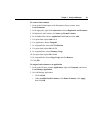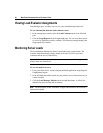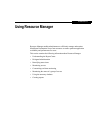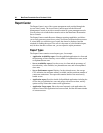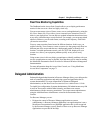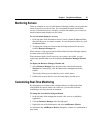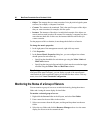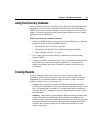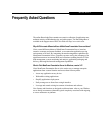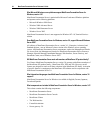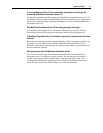
Chapter 6 Using Resource Manager 89
Using the Summary Database
Resource Manager can now store process, event, and any Resource Manager metric
information you select in an external Microsoft SQL Server or Oracle Database
DBMS. You can use a summary database to retrieve historical records or generate
reports. You can also generate reports from a summary database using an external
package such as Crystal Reports.
Before you start using a summary database
1. Install your DBMS software onto a server and create a database on it. Resource
Manager supports the following DBMS software:
• Microsoft SQL Server Versions 7 and 2000
• Microsoft Access and SQL Server 2000 Desktop Engine (MSDE)
• Oracle Database Versions 7, 8i, and 9i.
2. Set a system data source name (DSN) to communicate with the summary
database DBMS.
3. Configure a Database Connection Server. This server enables communications
between the server farm and the summary database by writing data to the
database and reading data from it. It should be relatively low-load for best
performance.
Creating Reports
Resource Manager enables you to produce a variety of reports based on the
information stored locally on each server, known as Current reports, or from the
information in your summary database, known as Summary reports. The major
differences between the two report types are:
• Current: These reports are generated from Resource Manager information
stored in the local database on each server and can be generated on a per-server
basis. The information is recorded at 15 second intervals and is referred to as
real-time. The Server Snapshot report can be stepped back to any time within
the last 96 hours.
• Summary: These reports are generated from Resource Manager summary data
stored in the summary database and can be generated for multiple servers.
Summary reports are less detailed than Current reports; however, they provide a
much greater historical scope and can be stepped back through any available
summary data. Summary reports can be customized to include or exclude
various record types.



